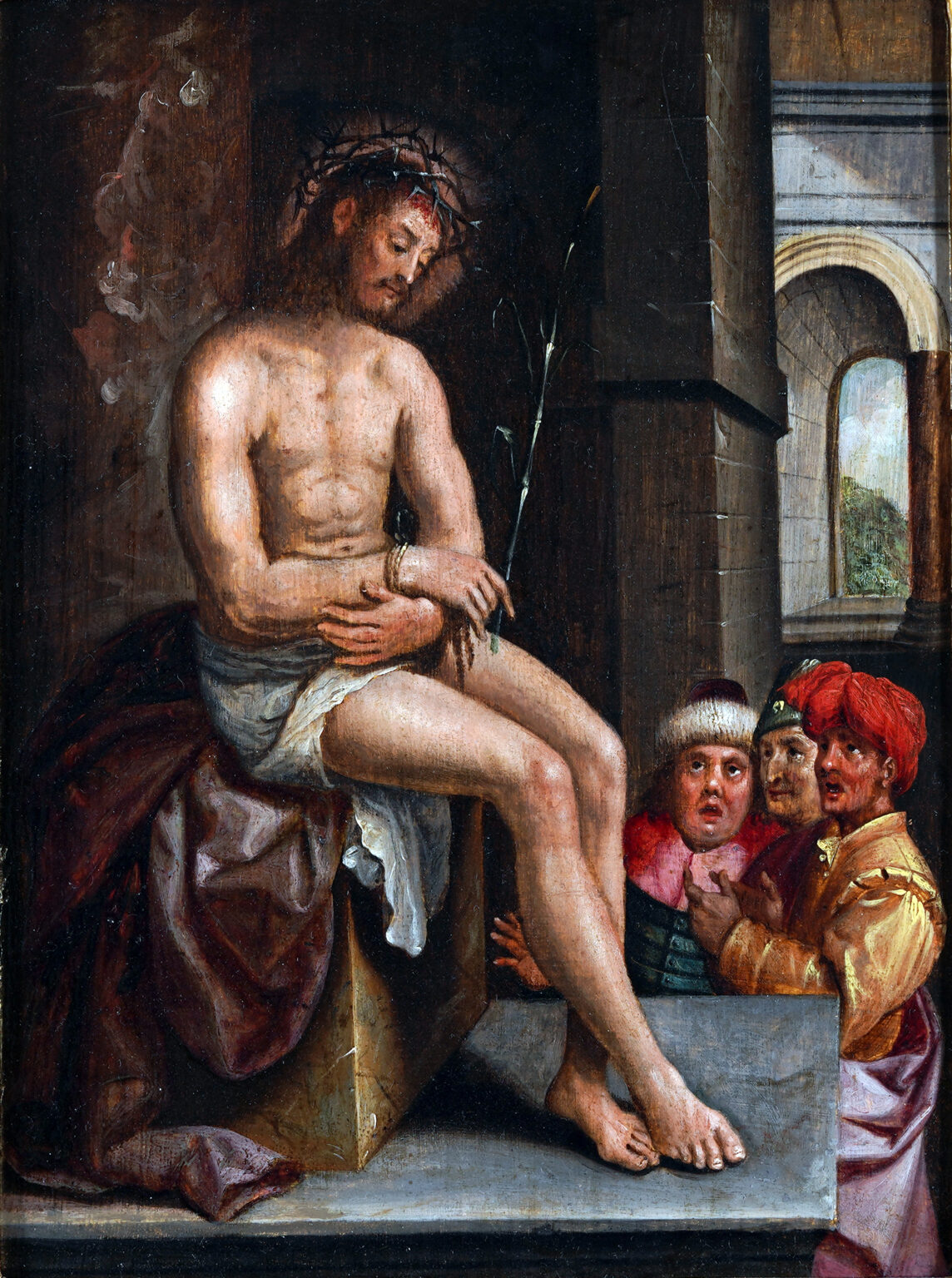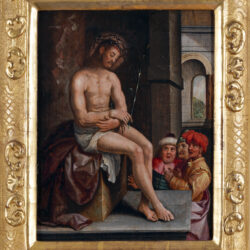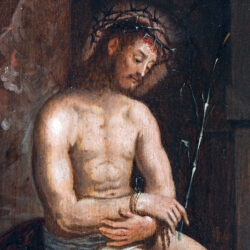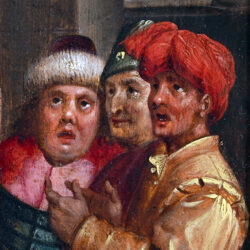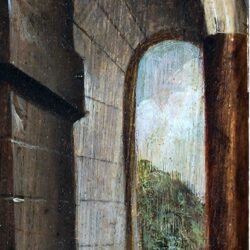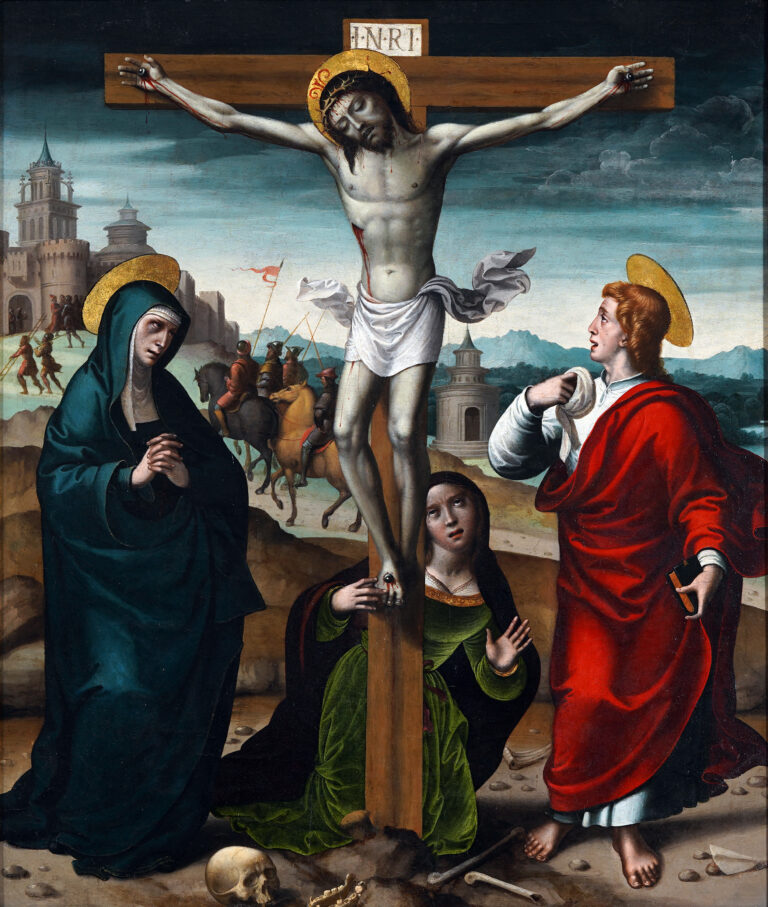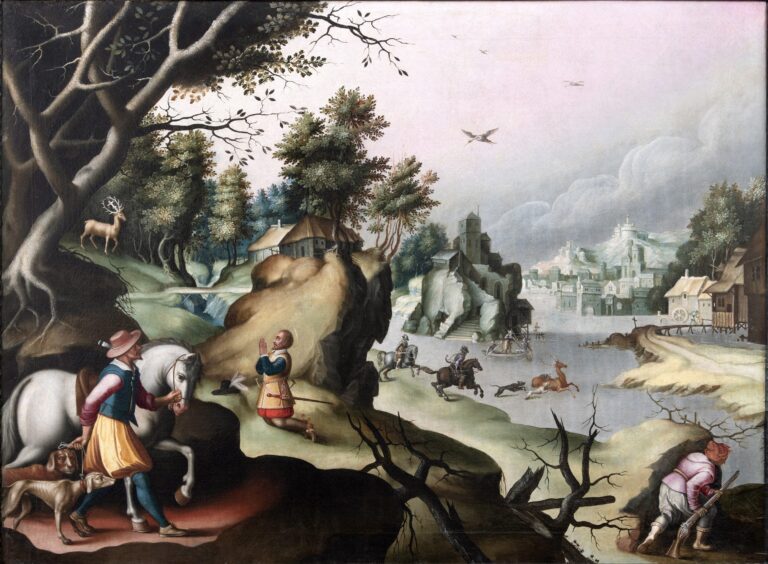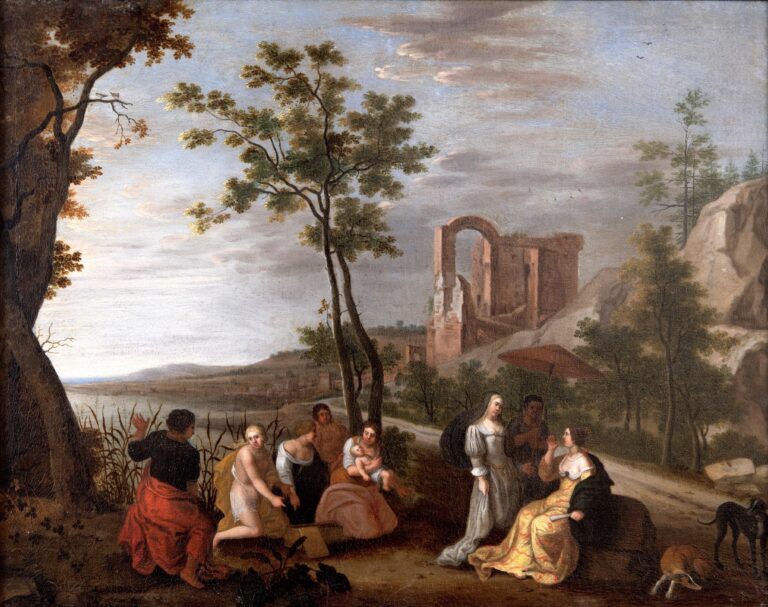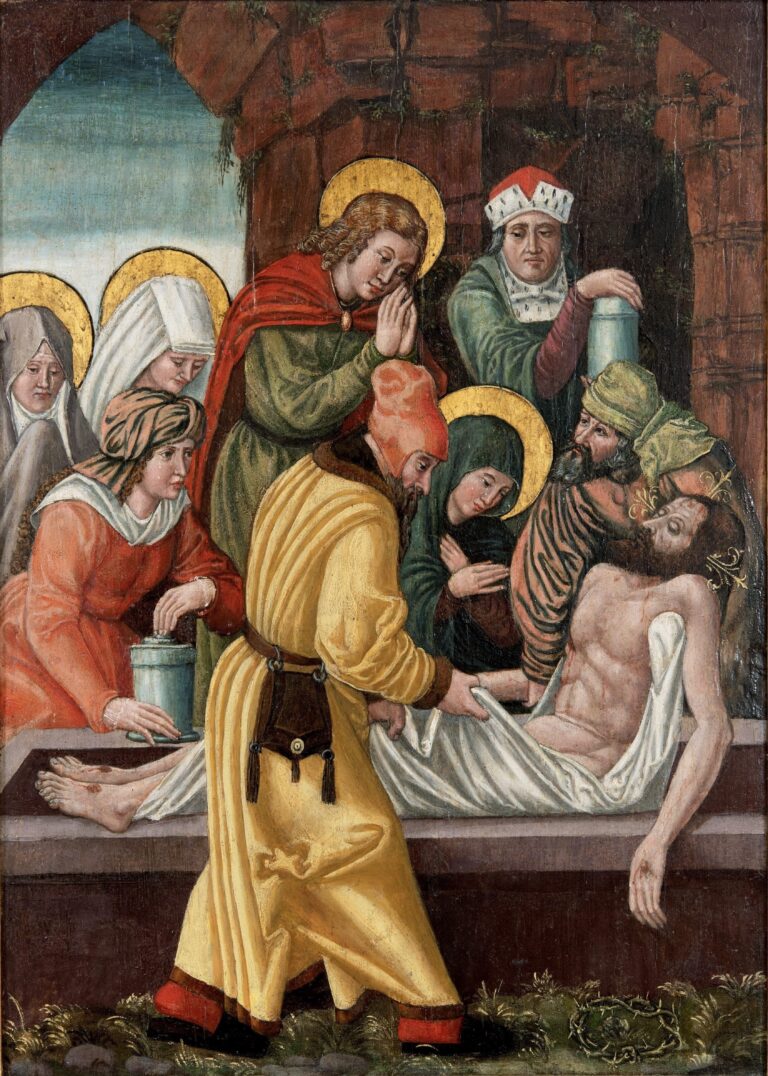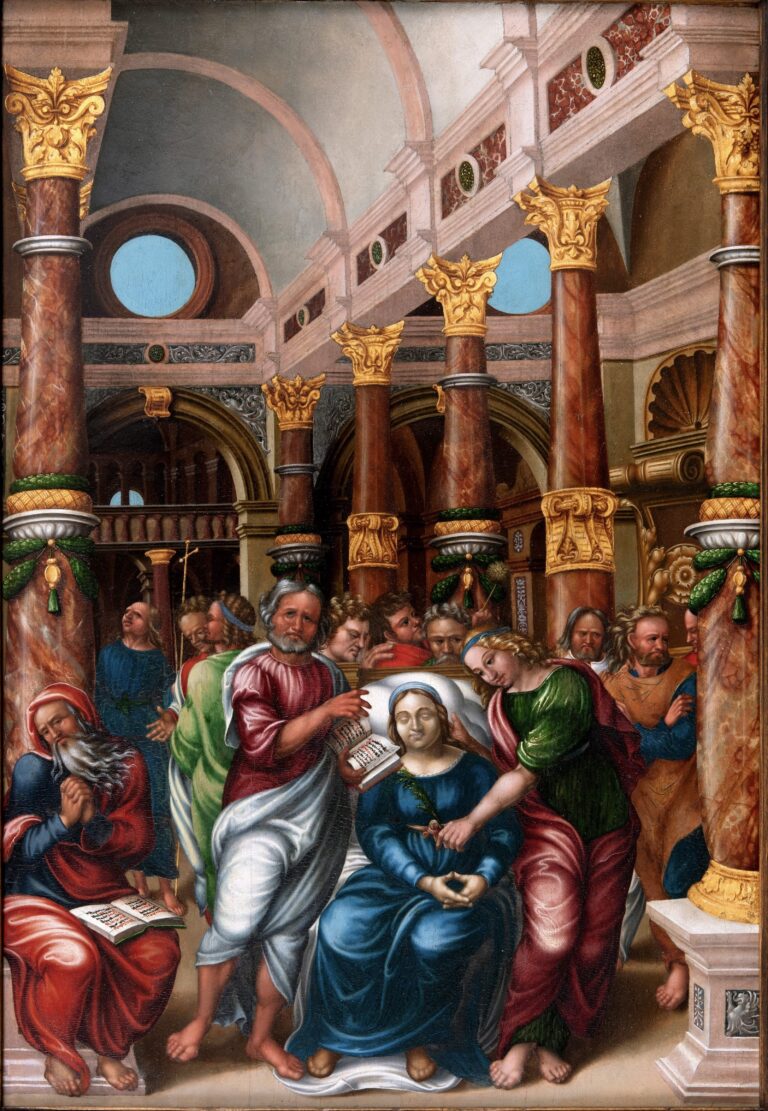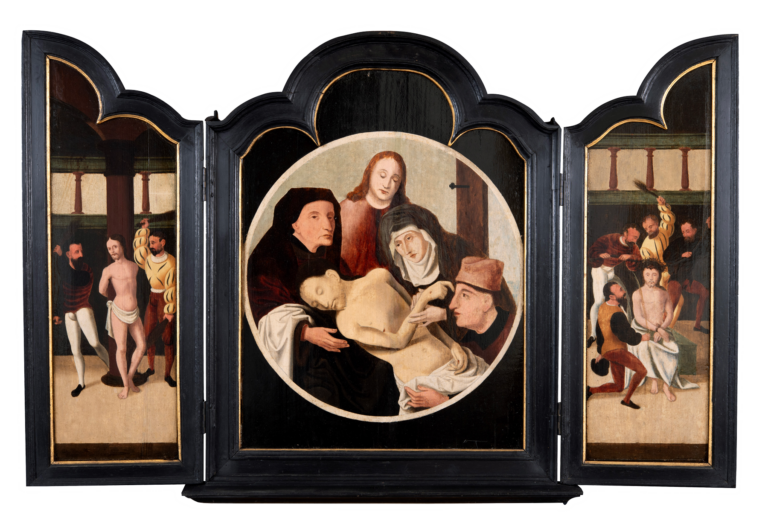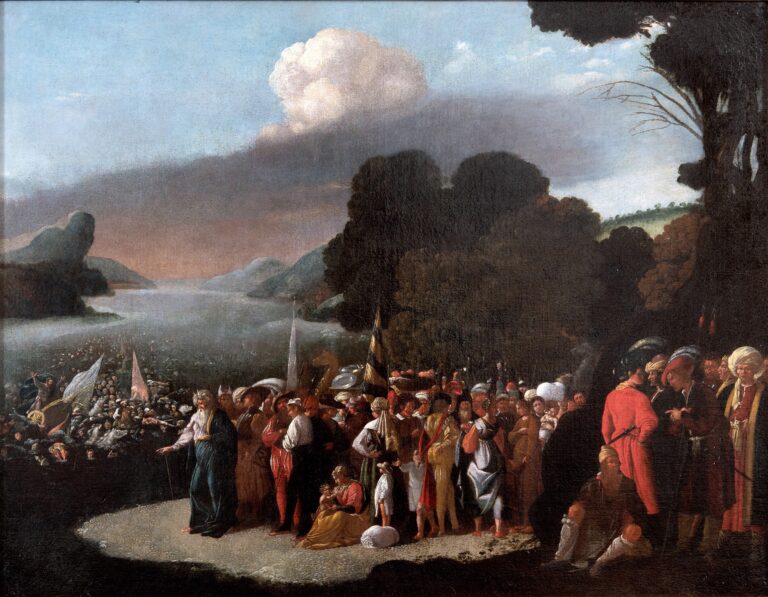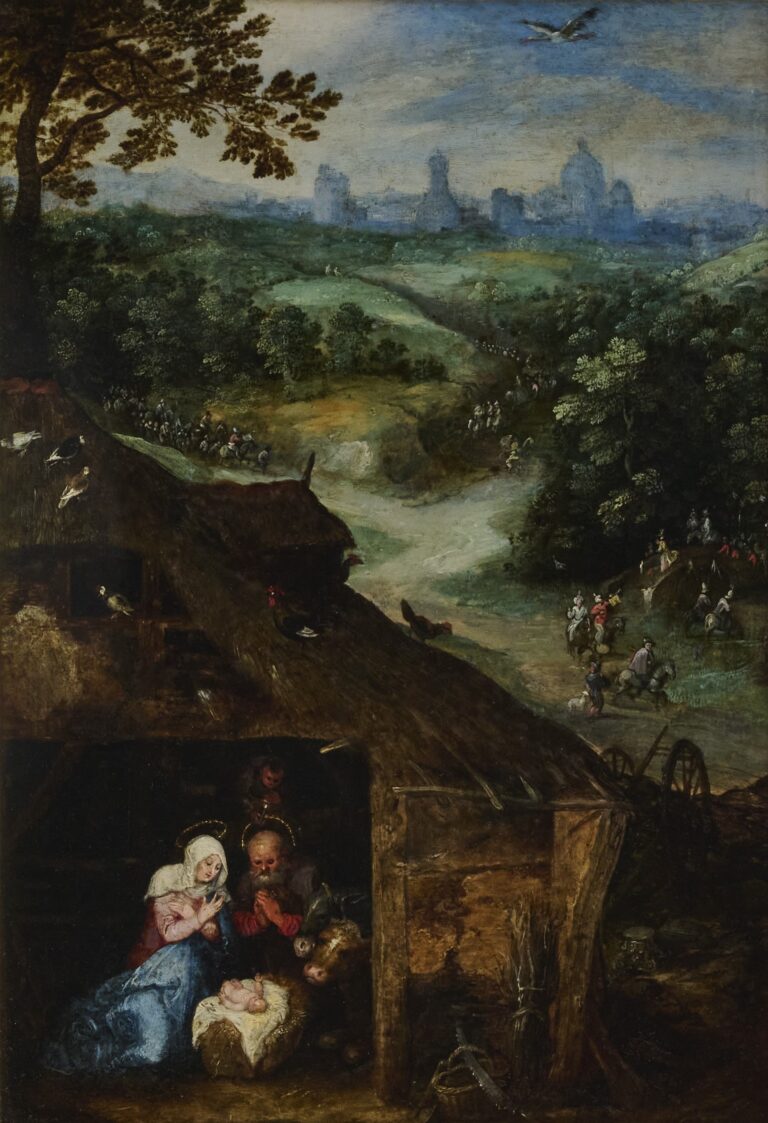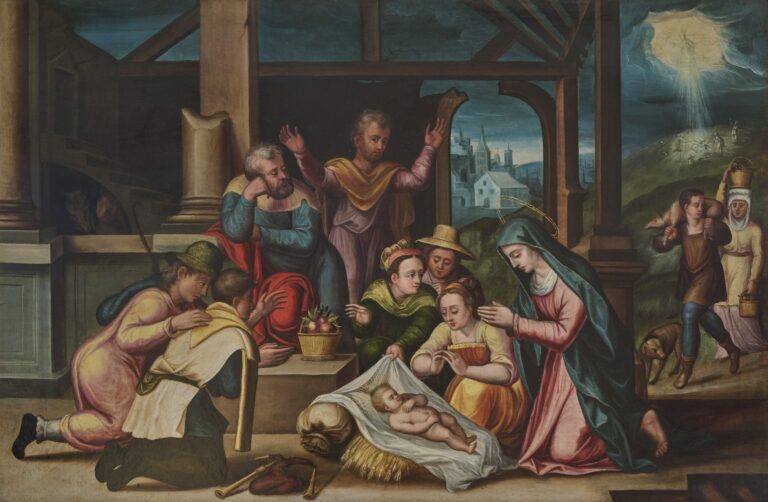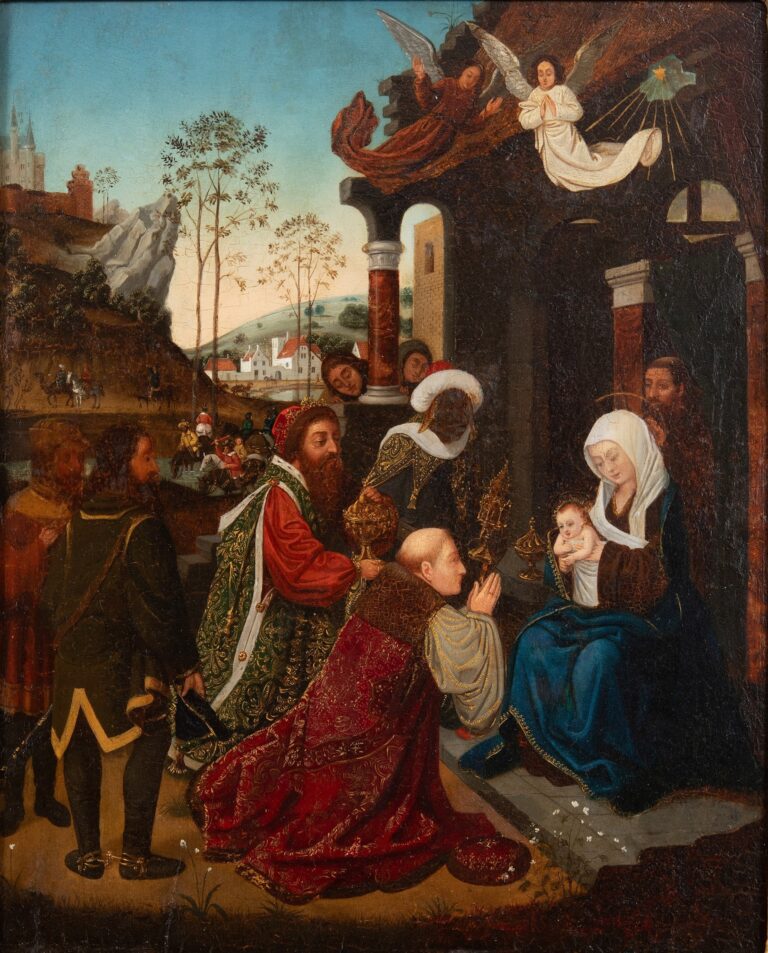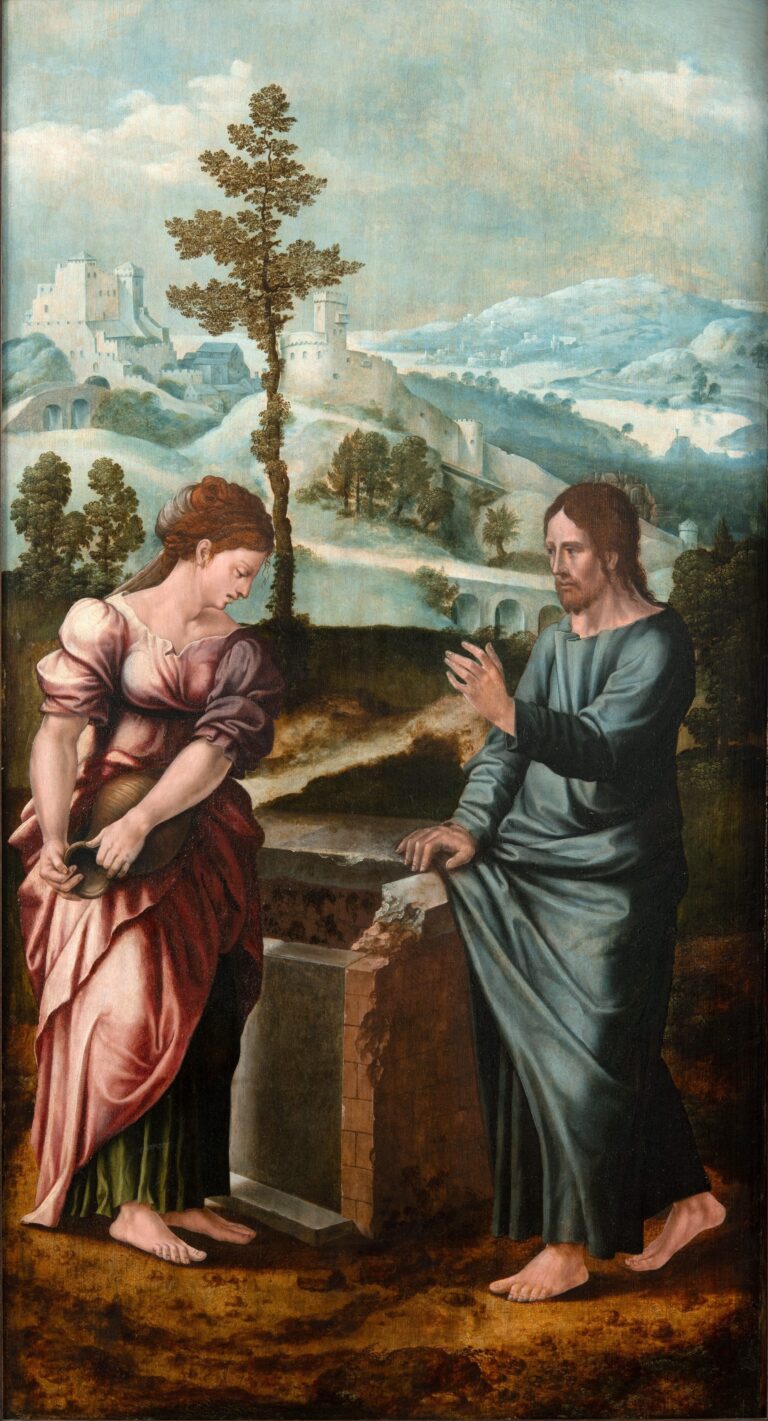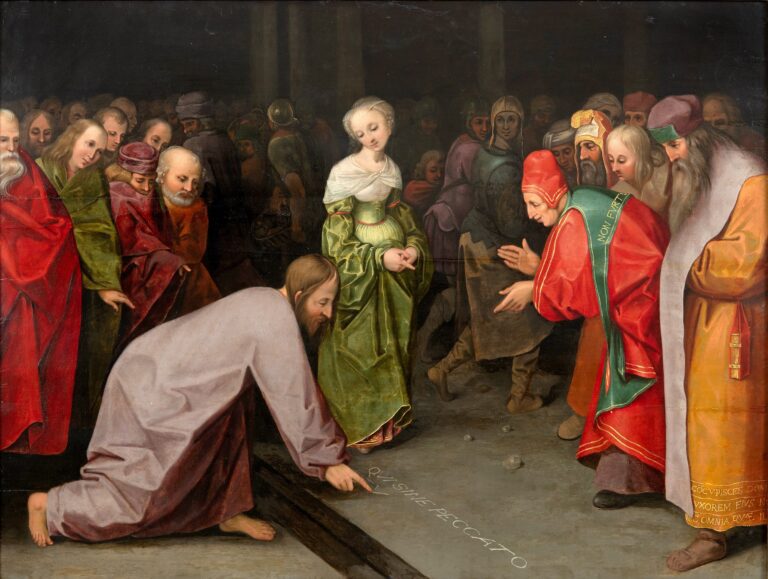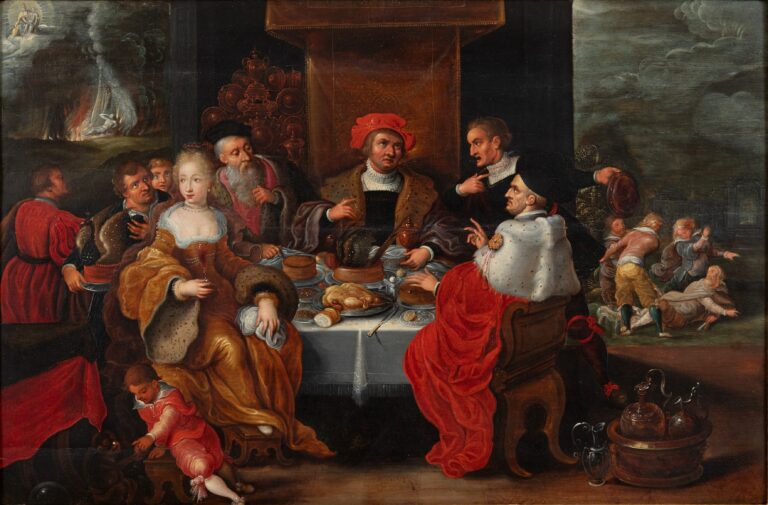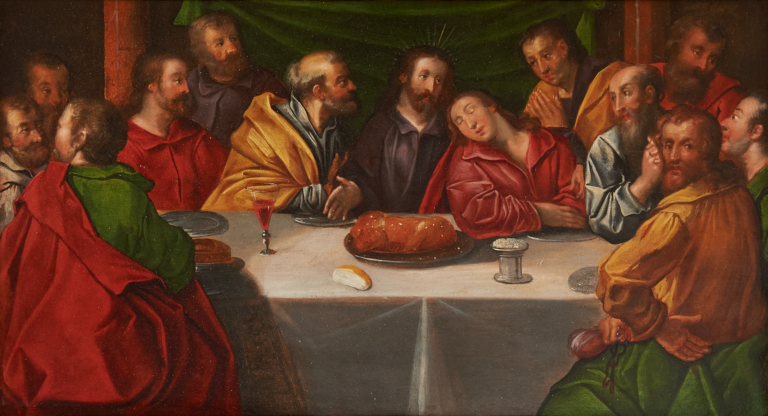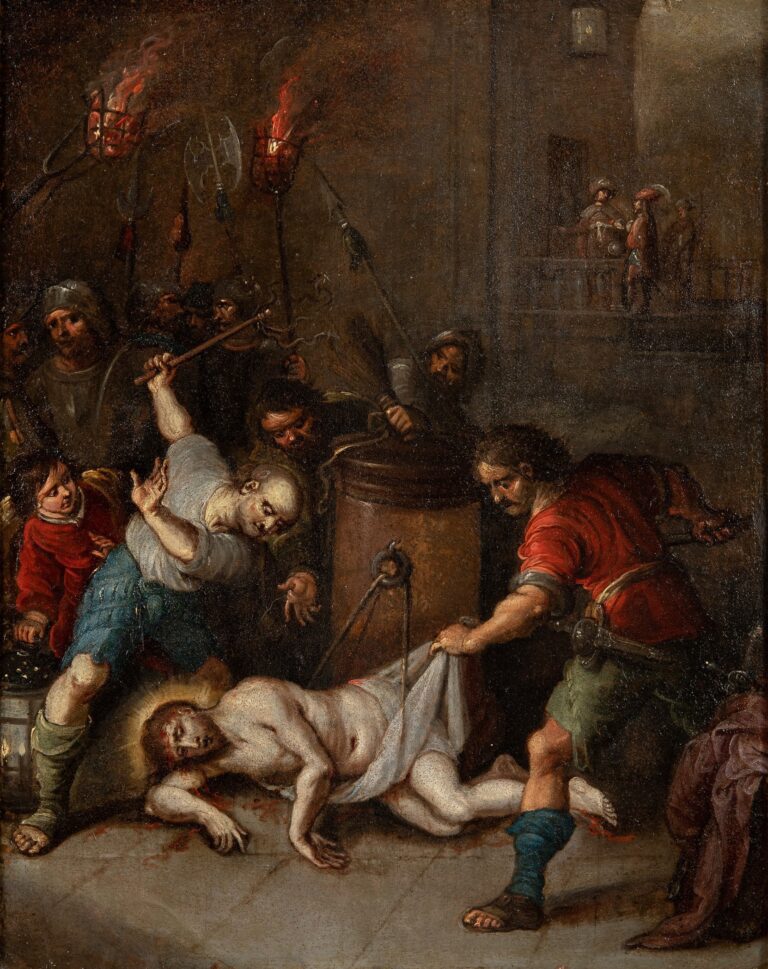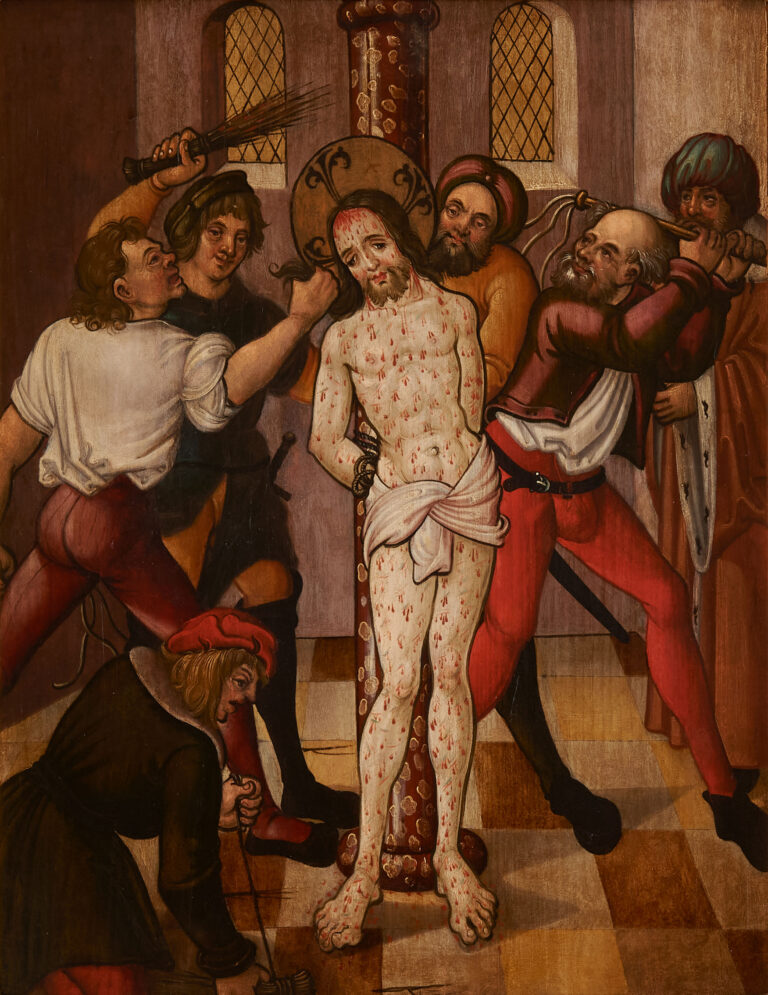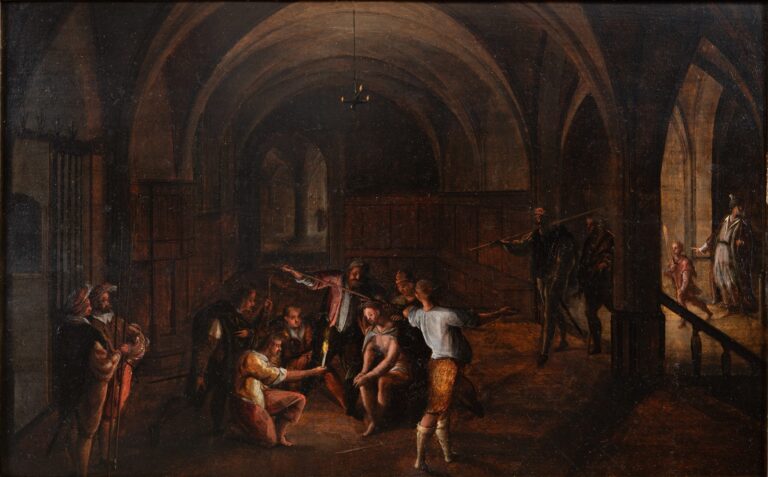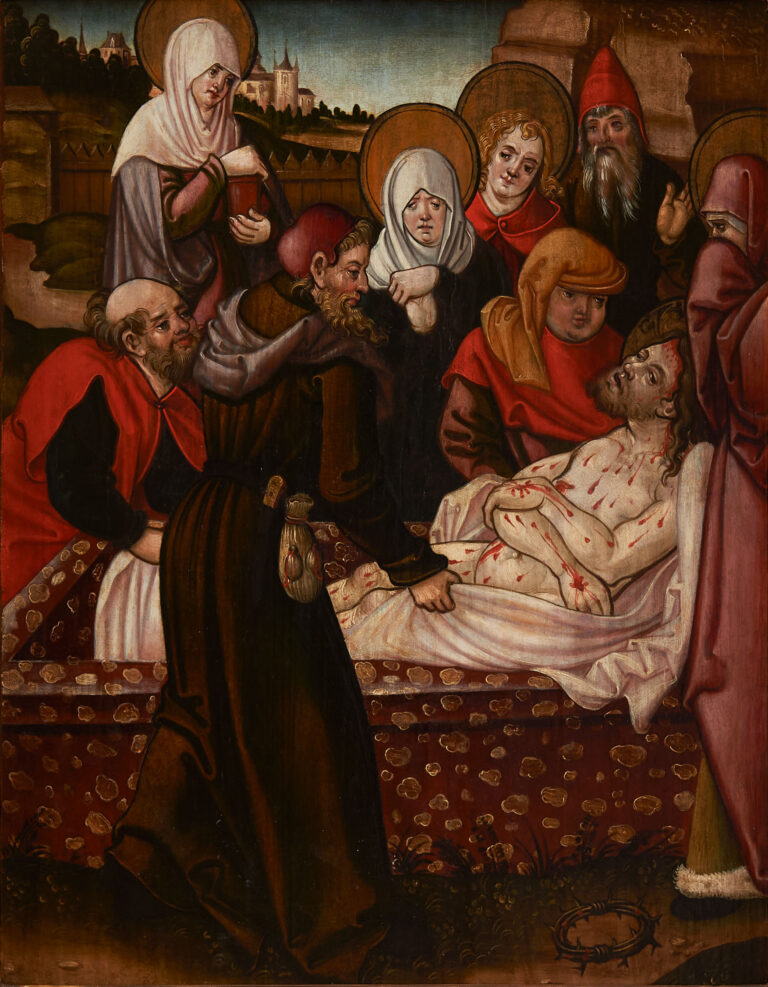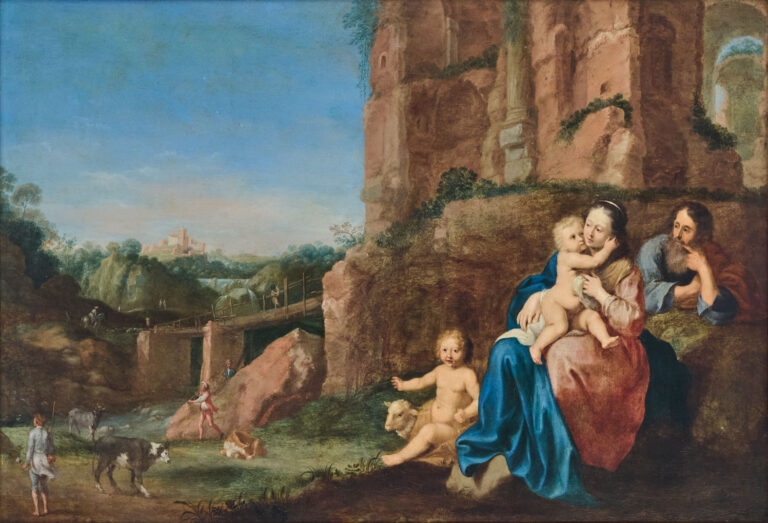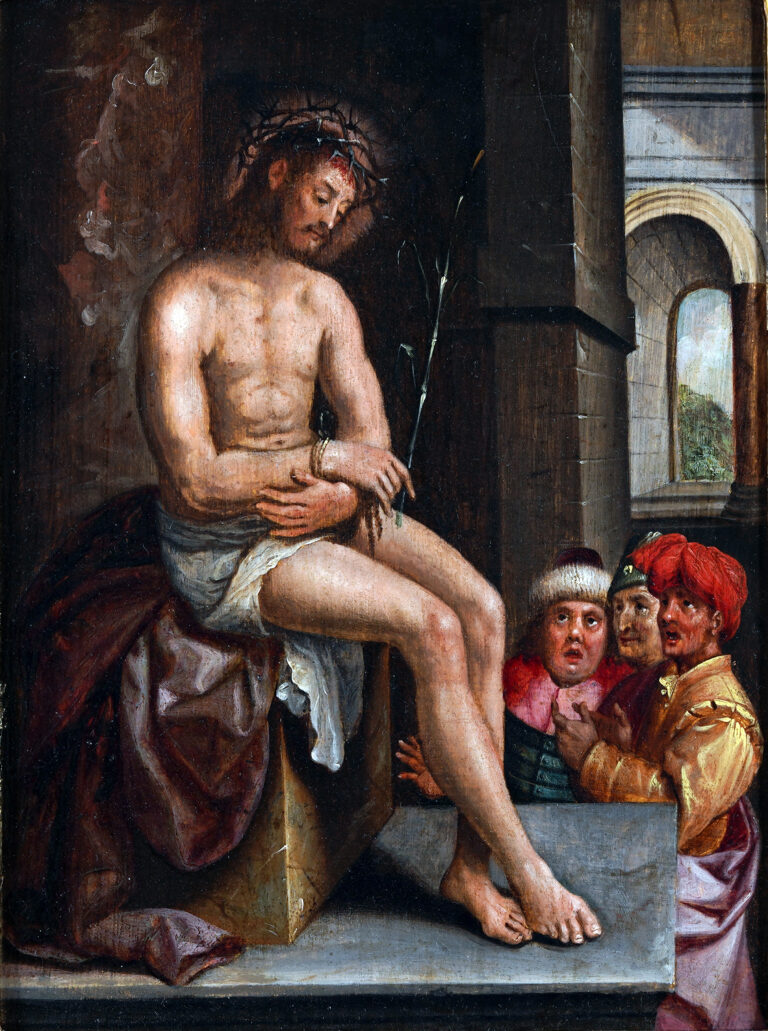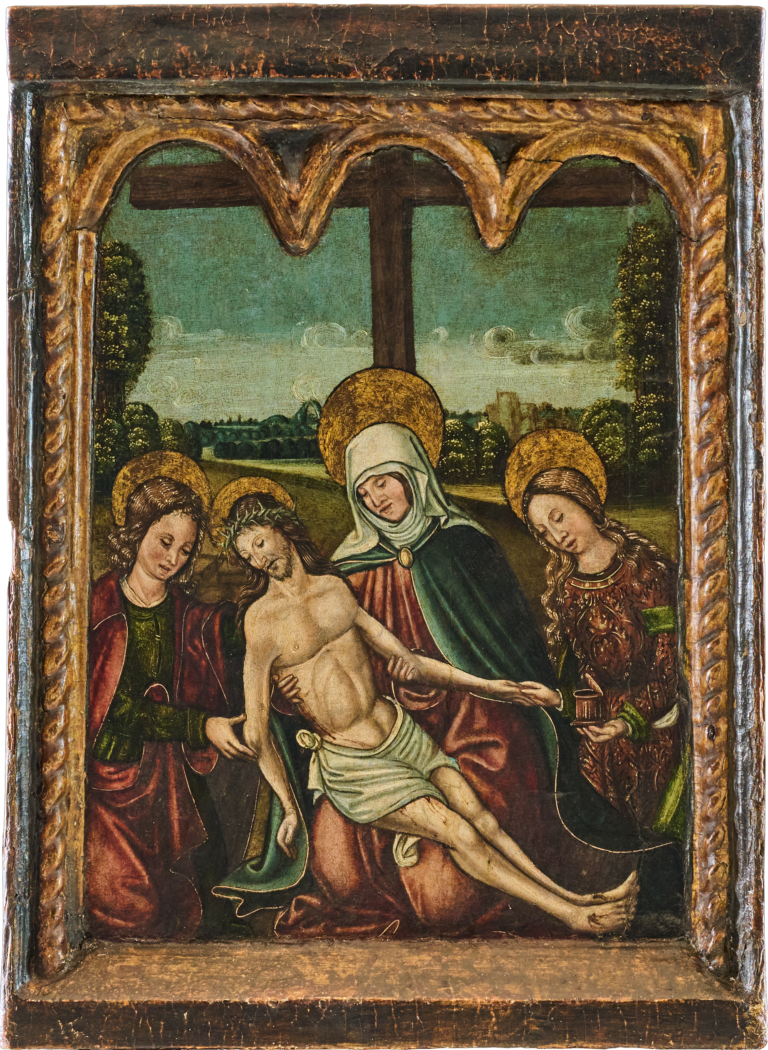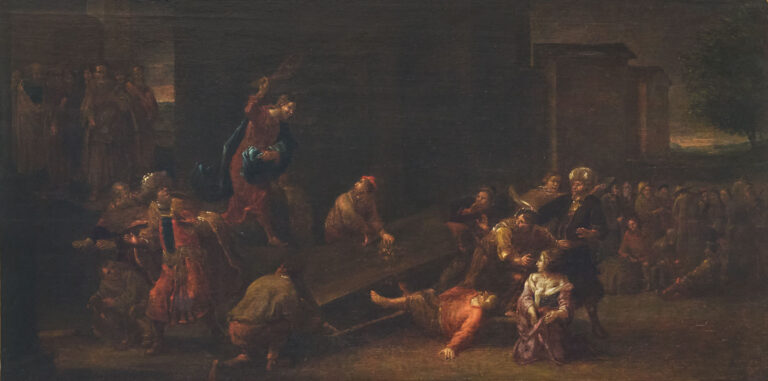Home » Collection » Christ on the Cold Stone
Christ on the Cold Stone
17th Century Flemish School
And they stripped him, and put on him a scarlet robe. And when they had platted a crown of thorns, they put it upon his head, and a reed in his right hand: and they bowed the knee before him, and mocked him, saying, Hail, King of the Jews! And they spit upon him, and took the reed, and smote him on the head. And after that they had mocked him, they took the robe off from him, and put his own raiment on him, and led him away to crucify him.
Matthew 27:28-31
This painting, by an unknown artist of the 17th Century Flemish School, depicts the moment from Christ’s Passion between his torture and his Crucifixion. Though not explicitly mentioned in the Gospels, it became a popular subject in Renaissance Painting, and came to be known as “Christ on the Cold Stone.”
Indeed here we see Christ sitting on a marbled stone, the evidence of his recent torture and mocking apparent. The crown of thorns is fastened to his head, which is shimmering with holiness. Christ’s hands are bound, and he holds in his right hand the reed that the Roman soldiers forced on him as a mock sceptre. And, true to Matthew’s account, the scarlet robe he was forced to wear in his mocking is draped across the stone, having been replaced by his own simple loincloth.
The onlookers in curiously exotic dress stand below Christ, two of them evidently shocked at the sight of this physically broken man. Yet by placing Christ above them our artist is indicating his spiritual and moral superiority to those who have witnessed his suffering and done nothing. Yes, he was mocked as “King of the Jews” but our artist is also saying that Christ is in fact King of Kings, even in this abject state.
In the right of the painting we can glimpse a hilltop through an arched window. Is this the place of Calvary to which Christ will soon ascend carrying his own cross?
Our painting’s composition is inspired by an influential 16th Century painting on the same topic by Jan Gossaert (1478 – 1532), now in the Museum of Fine Arts in Ghent, Belgium. Our painting will likely have been intended as a tool for spiritual contemplation. Indeed, it can serve the same purpose looking at it today: we see Christ resting from his recent sufferings, with yet greater pain to come. His expression is downcast, yet devoid of self-pity. As we look at this painting, we take courage from it, knowing that we can endure whatever sufferings life brings us.
Provenance: German Private Collection
